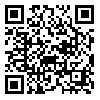BibTeX | RIS | EndNote | Medlars | ProCite | Reference Manager | RefWorks
Send citation to:
URL: http://jfqhc.ssu.ac.ir/article-1-269-en.html
Background: Aflatoxins (AFs) are the most prevalent carcinogenic mycotoxins, produced mainly by Aspergillus flavus and A. parasiticus. The general purpose of the present study was to use Dehydroacetic Acid (DHA) and Ozonated Water (OW) to control A. flavus growth and accumulation of Aflatoxin B1 (AFB1) in Iranian pistachios.
Methods: Three treatment pistachio groups were separately immersed in DHA (1 N) and OW (10 mg/L), and also combination of DHA and OW. Then, each group was contaminated with 1×103 A. flavus cell suspensions. Also, sterile distilled water as well as cyclohexamide solutions were considered as negative and positive control, respectively. The solution inhibitory characteristics were assessed by enumeration of viable as well as cultivable fungal conidia on the samples. High Performance Liquid Chromatography (HPLC) technique was used for AFB1 determination. Data were analyzed by One way ANOVA and Tukey T-tests using SPSS, Inc, Chicago, IL software (v. 16.0).
Results: DHA and combinations of DHA and OW groups which exhibited no growth of A. flavus, had the most antifungal activity (p<0.05) in comparison with the other groups. The highest AFB1 contamination content was seen in negative control samples (6.19±0.33 µg/kg) and also OW treated ones (6.1±0.32 µg/kg). The least AFB1 level was detected in DHA treated group (1.5±0.21 µg/kg) and combinations of DHA and OW (1.59±0.21 µg/kg). However, no AFB1 was found in positive control samples.
Conclusion: We found that DHA showed antifungal and inhibitory activities more than OW in Iranian pistachios. Application of DHA is recommend for Iranian food industries as a potential mean for prevention of the fungi growth and AFB1 accumulation in
pistachios nuts.
Received: 16/03/18 | Accepted: 16/06/14 | Published: 16/09/14
| Rights and permissions | |
 |
This work is licensed under a Creative Commons Attribution-NonCommercial 4.0 International License. |





